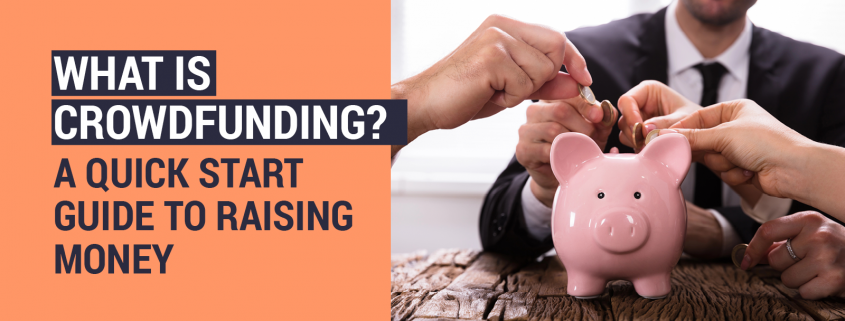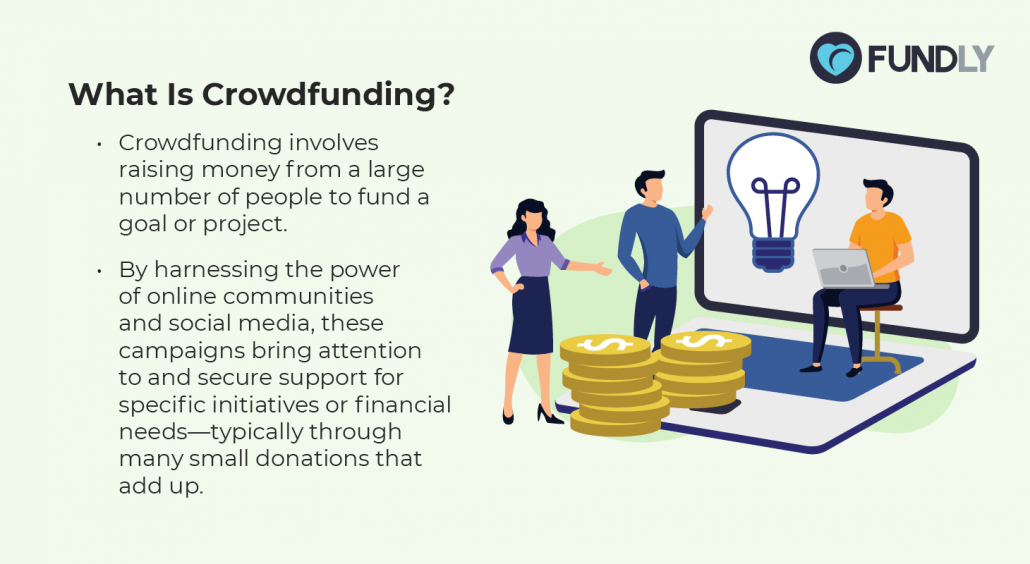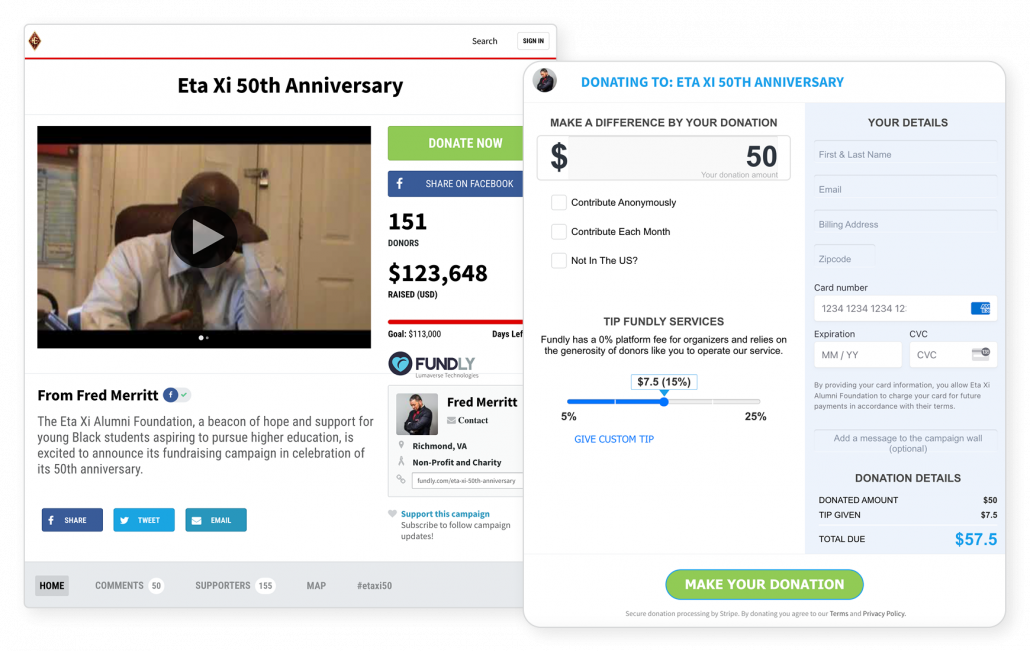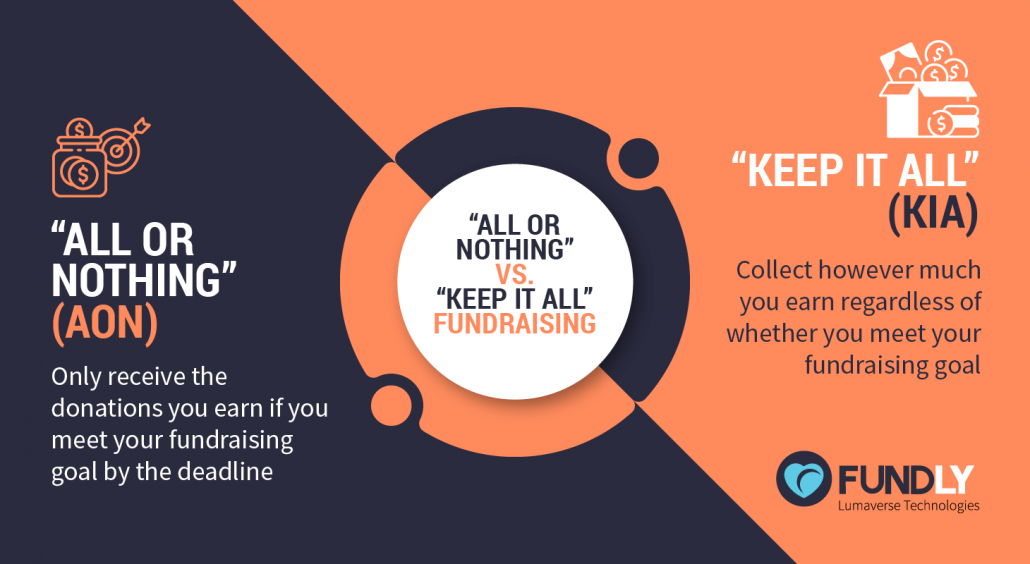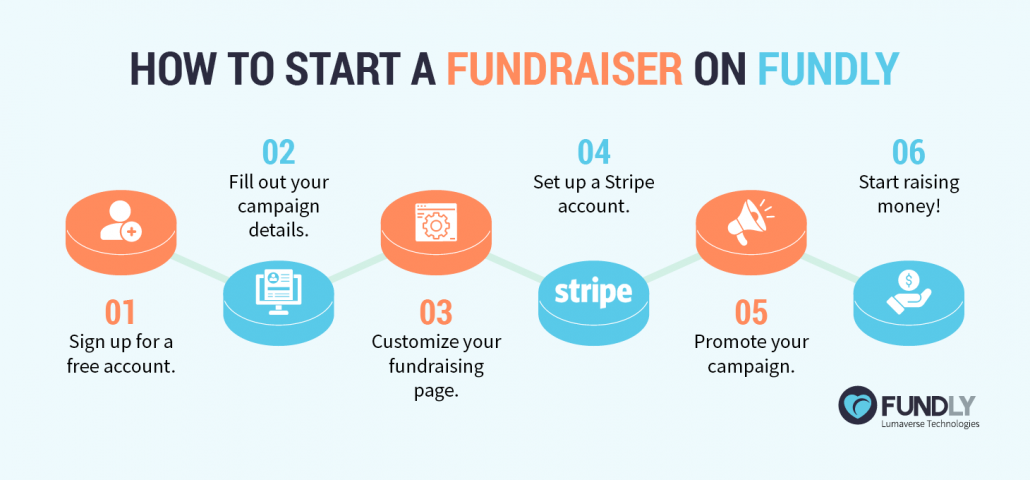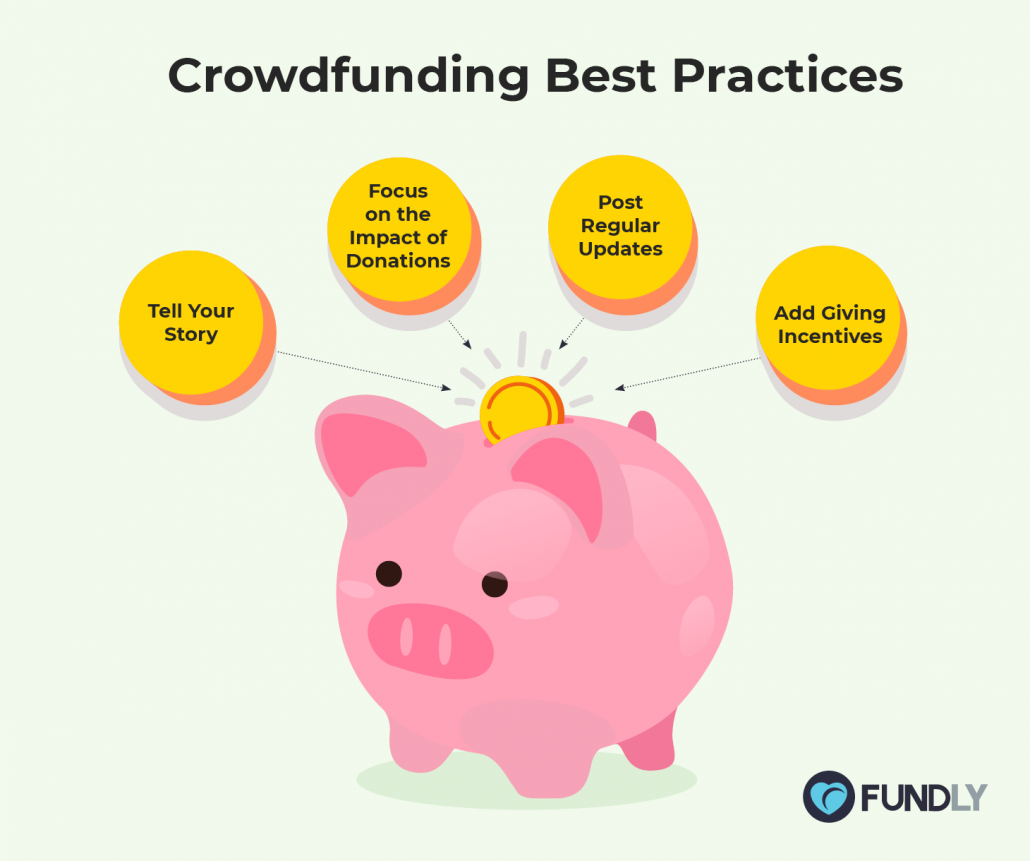What Is Crowdfunding? A Quick Start Guide to Raising Money
Everyone needs financial help every now and then. Maybe you are an aspiring musician planning to release your debut album, but you need a way to cover the recording costs. Or, perhaps you run a nonprofit animal shelter that requires urgent funding to care for an unexpected influx of animals into your facility.
Whether you’re looking to raise funds for personal expenses or a collective project, crowdfunding is one of the most accessible and powerful solutions for reaching your goal. Through crowdfunding, you can build a vast online community of support, tapping into the power of social networks to bring in donations.
In this guide, we’ll walk through everything you need to know to succeed with a crowdfunding campaign. Here is what we’ll cover:
- What Is Crowdfunding?
- How Crowdfunding Works
- What Are the Benefits of Crowdfunding?
- Popular Crowdfunding Websites
- Best Practices for Crowdfunding Campaigns
With the right tools and approach, you can turn crowdfunding into a reliable, repeatable fundraising strategy to bring your goals to life.
What Is Crowdfunding?
Crowdfunding is the practice of raising money from a large number of people to fund a goal or project. By harnessing the power of online communities and social media, these campaigns bring attention to and secure support for specific initiatives or financial needs—typically through many small donations that add up.
According to CAF’s World Giving Index, 4.3 billion people (or 73% of the world’s adult population) gave time, donated money, or helped someone they didn’t know at some point during the year. Crowdfunding campaigns allow individuals or organizations in need to directly reach those who have the means and willingness to help.
Crowdfunding is often confused with peer-to-peer (P2P) fundraising since both involve raising money from a wide audience. However, the main difference is that crowdfunding deals with a single campaign and donation page, while P2P fundraising requires having other individuals set up fundraising pages and collect donations on your behalf. Since both strategies can be highly effective, some fundraising platforms come with tools that support crowdfunding and P2P campaigns.
Types of Crowdfunding
Depending on your fundraising needs and goals, there are three main types of crowdfunding campaigns you can launch:
- Donation-based crowdfunding: People donate to your campaign without expecting or receiving anything in return. These donors are simply inspired by your cause, project, or story and want to help you succeed.
- Equity-based crowdfunding: This type of crowdfunding is primarily suited for those running early-stage businesses that want to expand. Donors provide funding in exchange for shares in the company.
- Rewards-based crowdfunding: People who contribute to your campaign receive rewards (such as branded merchandise) based on their donation amount. Or, you may provide them with the product or service they are supporting at the end of the campaign.
Some crowdfunding websites, such as GoFundMe, limit your crowdfunding to only donation-based campaigns. Other popular fundraising options, like Fundly, support donation-based crowdfunding and come with tools to add rewards to your campaign. This guide will primarily focus on donation-based crowdfunding, though many of the benefits and best practices will still apply to equity-based and rewards-based types.
Common Crowdfunding Use Cases
Crowdfunding is such a popular fundraising option because you can use it to raise money for virtually anything. For example:
- Individuals can cover expenses related to medical treatment, memorial services, weddings, and trips.
- Nonprofits can expand their programs, secure emergency resources, construct new buildings, and fund mission-related research.
- Sports teams can cover travel expenses, buy new uniforms or equipment, and refurbish facilities.
- Schools can purchase new technology, upgrade learning resources, offer extracurricular activities, and provide scholarship opportunities.
- Artists can produce albums, films, novels, stage productions, and games.
- Churches can fund mission trips, renovate buildings, host special events, and organize youth group activities.
The Eta Xi Alumni Foundation is a 501(c)(3) nonprofit that knocked its latest crowdfunding campaign out of the park. To celebrate its 50th anniversary, the nonprofit launched a fundraiser to support its mission of helping Black students achieve their higher education goals. Using Fundly’s platform, the campaign exceeded its goal of $113,000 by over $10,000!
How Crowdfunding Works
How do you go from identifying a fundraising need to receiving donations from an online community? The process is relatively simple:
- Choose a crowdfunding website. Research the top crowdfunding options for hosting your campaign. Some charge a percentage of the funds you raise, while others have no platform fees. Consider how user-friendly the platform is and look for the specific features that will support your fundraising approach. For example, you might want a platform that enables P2P fundraising or allows you to offer rewards to donors.
- Set up your crowdfunding campaign. Create your campaign page by adding an attention-grabbing title and description. Outline your fundraising goal and the duration of your campaign. Then, incorporate authentic images and videos that help potential donors emotionally connect to your campaign.
- Spread the word about your campaign. Inform and inspire people to support your fundraiser by sharing it through email and social media. Many crowdfunding websites have built-in tools to make this step easy. Post regular updates on your page to keep the momentum going.
- Track your fundraising progress. Your crowdfunding website should provide real-time data on your campaign’s performance, including page views and donations received. Some fundraising platforms, like Fundly, have a heat map tool that allows you to see where your donors are geographically located to help you tailor your outreach.
- Thank donors for their support. Even if your donors don’t expect anything in return, you should still express your appreciation for each individual contribution. Your crowdfunding tools will automatically send a receipt to each donor, but you can (and should!) go above and beyond by adding a sincere, personalized message that addresses each recipient by name.
If you run into any questions or issues during your crowdfunding process, contact your platform’s support team for assistance.
What Are the Benefits of Crowdfunding?
While there are many online fundraising opportunities available, these benefits of crowdfunding make it stand out for both individuals and nonprofits:
- Access to a wide audience: Research shows that 62% of donors who give to crowdfunding campaigns are new to crowdfunding. Rather than appealing to the same people over and over, you can reach a global audience and expand your donor base through social sharing.
- Easy setup process: The best crowdfunding websites charge no upfront fees for launching a campaign. They come with user-friendly tools that allow you to customize your fundraising page to your liking and start collecting funds in minutes.
- Community building: Crowdfunding brings people together under one common cause, helping them find a sense of belonging online as they work together toward a shared goal—helping your fundraiser succeed.
- Quick payout: Most crowdfunding platforms take no longer than one week to transfer donations into your bank account. Especially if you’re in urgent need of funding, crowdfunding makes it quick to launch and reap the rewards of your fundraising efforts.
Ultimately, crowdfunding puts you in charge of your fundraising journey. You can decide how you want to present your story, interact with donors, and put your funds to use.
Popular Crowdfunding Websites
Before you jump into the crowdfunding process, you must first establish a strong foundation for your fundraising success by finding the right tools for your needs.
Note that some crowdfunding websites have an “All or Nothing” (AoN) approach, which means you can only receive the funds you earn if you meet your fundraising goal by the deadline. “Keep it All” (KiA) websites, on the other hand, allow you to collect however much you earn regardless of whether you meet your fundraising goal.
Some of the best-known AoN and KiA platforms include:
Fundly
With its versatile tools, Fundly has helped individuals and organizations around the world raise more than $330 million. Whether you need financial support for personal medical expenses or a nonprofit project, this fundraising platform makes it easy to create a personalized campaign page and spread the word.
With Fundly’s 0% platform fees and “Keep it All” fundraising approach, you can start collecting donations in minutes. All you have to do is:
- Sign up for a free account.
- Fill out your campaign details.
- Customize your fundraising page.
- Set up a Stripe account.
- Promote your campaign.
- Start raising money!
Fundly stands out as a leading fundraising tool because of its comprehensive features, which go beyond standard donation-based crowdfunding. You can build branded, mobile-friendly fundraising pages, set giving levels and incentives, promote your campaign across social media, manage events, and more—all directly on the platform.
While Fundly charges a transaction fee of 2.9% + $0.30, this is the standard credit card processing fee for most fundraising platforms. It typically takes only 1-2 days to transfer the donations you earn into your bank account, which is generally faster than other websites like GoFundMe.
Note: Fundly is not intended for business start-ups.
Kickstarter
Kickstarter is one of the most popular crowdfunding platforms for creative projects, from comics to fashion to video games. Some of Kickstarter’s notable features include:
- Pre-launch page editor
- Rewards tab and tiers
- Backer survey builder to collect key details
- Project dashboard
However, the platform’s “All-or-Nothing” model means that you won’t receive any funding if you don’t reach your goal during the campaign duration (which can be up to 60 days).
Piggybackr
If you’re fundraising for a school sports team, club, or classroom, Piggybackr is specially built for your crowdfunding needs. The platform is designed to be safe for children under 13, who can:
- Set up a personalized fundraising page.
- Invite team members for peer-to-peer fundraising.
- Track emails and other promotions.
- Raise team funds that are deposited in a single account.
While Piggybackr has no signup fee, it does charge a 4.0% platform fee in addition to processing fees. However, you have the option to allow donors to cover this cost.
Experiment
Experiment is a crowdfunding platform intended solely for science-related projects. Once you’ve defined your project, collected peer endorsements, and received approval from an Experiment staff member, you can start raising funds from the community. Anyone can launch a project on the platform, as long as you can share the progress and results of your findings with backers.
Like Kickstarter, Experiment has an “All-or-Nothing” model, which means you must reach your funding target by the deadline to receive the money raised.
Best Practices for Crowdfunding Campaigns
After you’ve decided on the right crowdfunding platform for your campaign, follow these best practices to maximize your fundraising results:
- Tell your story. With so many campaigns out there, how do you convince donors to support yours? The answer is simple: Convey your story. People who resonate with your fundraising goal will naturally contribute to and share your campaign with others. At the same time, keep your messaging clear and concise—projects that raise the most money have an average of 300-500 words in the description.
- Focus on the impact of donations. Highlight what donors will help you accomplish by contributing to your campaign. For example, a wildlife rehabilitation center might share that every $50 will feed an animal for a month, and every $200 covers an x-ray for a wounded animal in need.
- Post regular updates. Since crowdfunding campaigns count on the contributions of many donors toward a fundraising goal, keep them posted on your collective progress. Share milestones, such as reaching your halfway mark, to give donors a chance to celebrate and keep the ball rolling.
- Add giving incentives. If you are raising money for an artistic project, sports team, or upcoming trip, giving incentives can significantly boost engagement with your crowdfunding campaign. Set different incentives for different giving levels. For example, if you are raising money for your school band, a $50 donation might come with discounted tickets, while a $100 donation might come with discounted tickets and a concert recording.
After a successful campaign, always remember to express your gratitude to donors. Even if you implemented giving incentives, reach out with thoughtful and personalized messages to demonstrate how much you value each individual contribution. Doing so helps you build stronger connections with donors and retain their support for future crowdfunding campaigns.
Wrapping Up: Building on Your Crowdfunding Momentum
Thanks to the internet, people are more connected than ever before. Whether you need to raise funds in response to a natural disaster or are hoping to bring an art project to life, you’re bound to find generous donors eager to support your goals.
Crowdfunding allows you to tap into the power of a vast online community that can help you power significant change in the world. By updating and engaging regularly with this community, you can nurture lasting relationships that you can count on for years to come.
If you’re interested in diving deeper into crowdfunding and maximizing your fundraising potential, check out these additional resources:
- Comparing 30+ of the Best Crowdfunding Websites. Explore the most popular crowdfunding platforms and their standout features to find the best option for your goals.
- Fundly vs. GoFundMe: Which Platform Is Best For You? If you’re not sure whether to go with Fundly or GoFundMe for your fundraising needs, use this detailed comparison to guide your decision-making.
- 35 GivingTuesday Ideas + Tips to Shatter Your Goals. Discover how nonprofits can raise more through crowdfunding and other engaging fundraising ideas on GivingTuesday.

